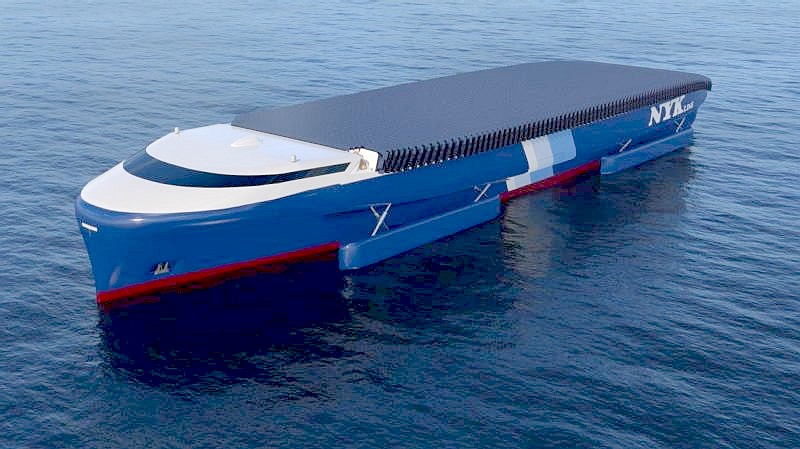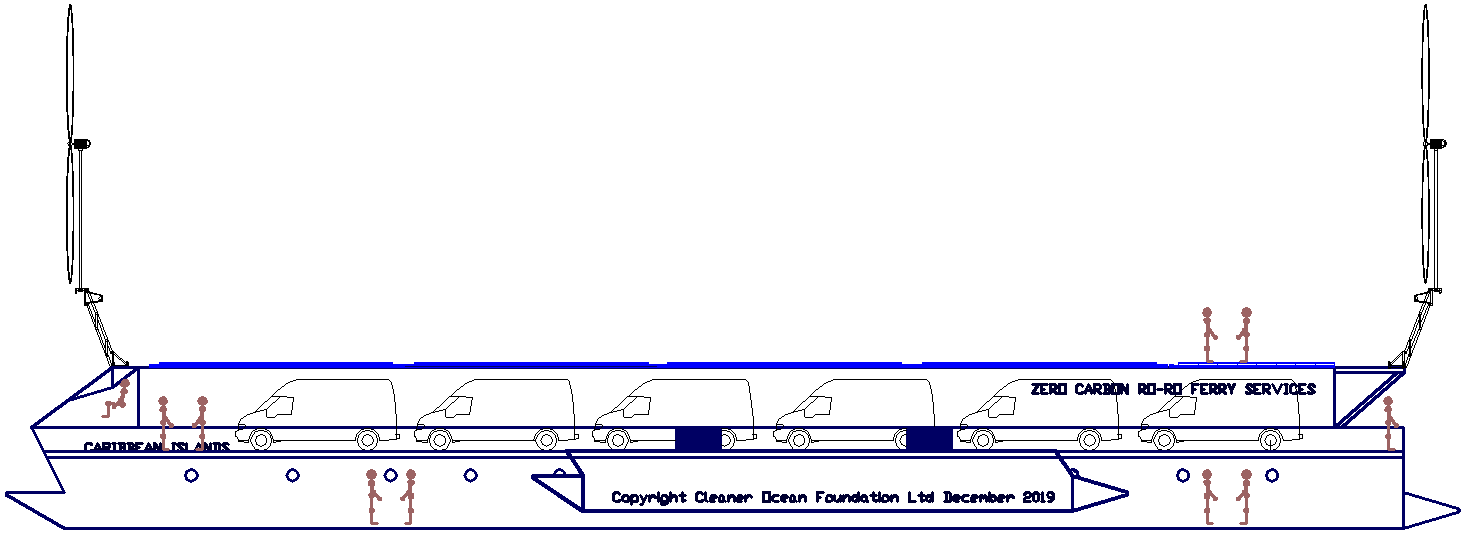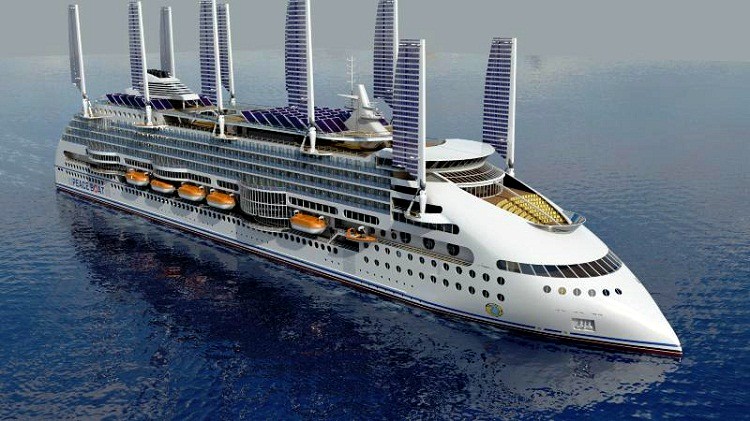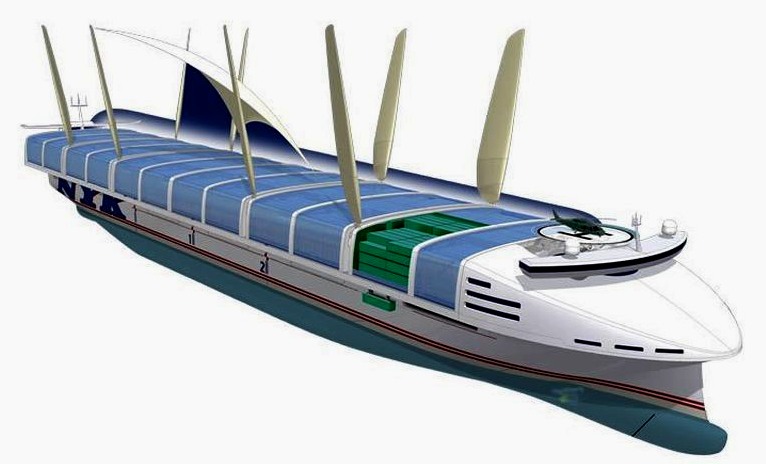|
NYK SUPER ECO SHIP 2050
Please use our A-Z INDEX to navigate this site where page links may lead to other sites
|
|||||||||||||||||||||||||||||||||||||||||||||||||||||||||||||||||||||||||||||||||||||
|
NYK has joined the Getting to Zero Coalition,* a partnership among the Global Maritime Forum, the Friends of Ocean action, and the World Economic Forum that builds on the Call to Action in Support of Decarbonization launched and signed by more than 70 leaders from across the maritime industry and financial institutions.
In its medium-term management plan “Staying Ahead 2022 with Digitalization and Green” released in 2018, NYK announced the group’s intent to integrate environmental, social, and governance (ESG) initiatives into management strategy to positively address the tough issues that challenge our society. In fact, NYK has positioned climate change as one of the company’s most important issues, and is working to implement next-generation fuels such as LNG fuels to aid marine-fuel decarbonization. NYK aims to contribute to environmental preservation for maintaining a sustainable society.
GCAPTAIN NOVEMBER 15 2018
- NYK SUPER ECO SHIP 2050
Details of the concept ship’s main features provided by NYK:
An air-lubrication system effectively reduces the frictional resistance between the vessel’s bottom and the seawater by means of bubbles generated by supplying air to the vessel’s bottom. And automatic hull cleaning during port stays prevents any negative impact on vessel efficiency.
Finally, propulsion efficiency is increased by replacing conventional propellers with flapping foils that mimic the movements of dolphins.
SUSTAINABLE CONTAINER SHIPS - This 50m concept vessel may be doubled and quadrupled without too much trouble. You'd need to up-scale by a factor of 8 to match the 400 meter ships that operate today to carry 960 standard containers. See our top ten list below. That is nowhere near the capacity of a heavy bunker fueled giant, but it is a formula for eventual 100% zero carbon transportation that is theoretically workable. We believe that such a system could eventually replace bunker fuels and eliminate the need for liquid fuels that may be potentially dangerous.
CARGO CONTENDERS A list of the top ten fossil fueled leaders that could benefit from solar and wind assistance. You may notice from the specification of these vessels that we are in the right ballpark for power to cargo ratio when comparing DWT to installed engine power:
ZERO CARBON RORO - This is a small roll-on roll-off ferry designed to carry 12 large vans, with passenger rooms below decks. She is a zero carbon design featuring twin wind generators that also add to thrust directly from the wind (like sails) and a full deck of solar panels that track the sun - including a battery store. The age of zero carbon shipping is dawning, with designs like this leading the way. Design Copyright © December 6 2019.
A - Z SAIL AND SOLAR ASSISTED BOATS & SHIPS
LINKS & REFERENCES
https://gcaptain.com/nyk-unveils-zero-emission-pure-car-and-truck-carrier-concept/ https://www.seatrade-maritime.com/asia/video-nyk-unveils-zero-emissions-car-carrier-concept-design https://www.assafinaonline.com/maritime-news/assafina-news/shipping/video-nyk-unveils-zero-emissions-car-carrier-concept-design https://www.globalmaritimeforum.org/getting-to-zero-coalition https://www.nyk.com/english/news/2019/20191003_01.html
TRANSFERABLE TECHNOLOGY - The design of the Climate Change Challenger might be adapted to Cargo, Container, Cruise and Ferry designs, without needing to radically alter port facilities. The designs above are not representative of adaptations of the concept, but serve to illustrate the thinking of other design houses.
Please use our A-Z INDEX to navigate this site
AEGEAN - ADRIATIC SEA - ARCTIC OCEAN - ATLANTIC OCEAN - BALTIC SEA - BAY OF BENGAL - BERING SEA - CARIBBEAN SEA - CORAL SEA EAST CHINA SEA - ENGLISH CHANNEL - GULF OF GUINEA - GULF OF MEXICO - INDIAN OCEAN - IONIAN - IRISH SEA - MEDITERRANEAN SEA NORTH SEA - PACIFIC OCEAN - PERSIAN GULF - SEA OF JAPAN - SOUTH CHINA SEA - SOUTHERN OCEAN - TYRRHENIAN
|
|||||||||||||||||||||||||||||||||||||||||||||||||||||||||||||||||||||||||||||||||||||
|
This website is provided on a free basis as a public information service. copyright © Climate Change Trust 2019. Solar Studios, BN271RF, United Kingdom.
|





